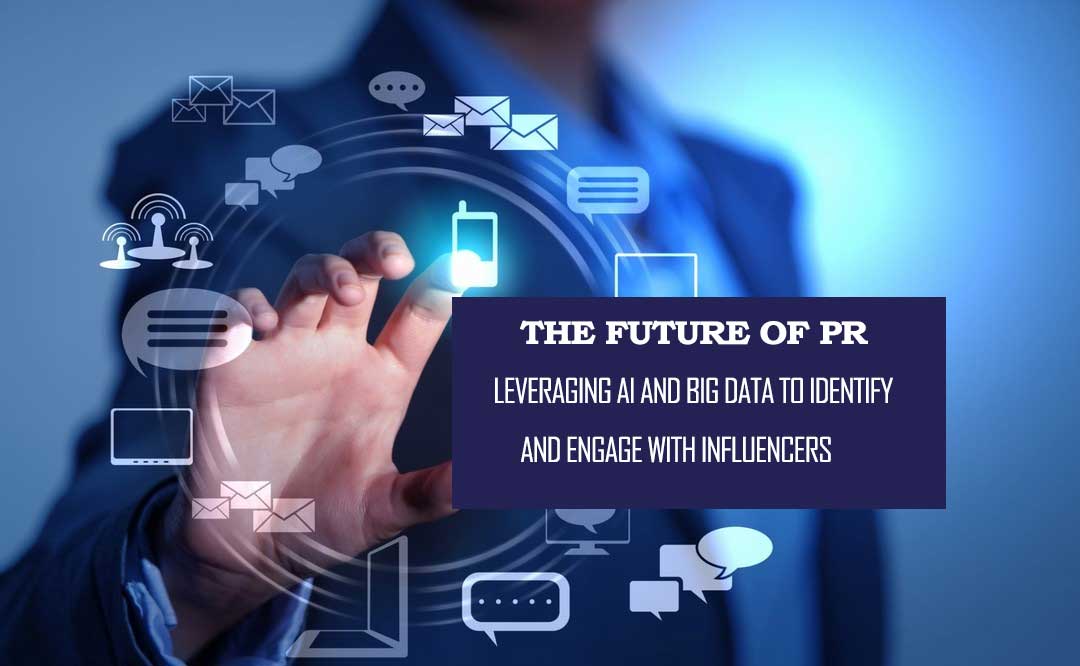Articles
The Future of PR: Leveraging AI and Big Data to Identify and Engage with Influencers

It’s not only advantageous, but also essential to keep ahead of the curve in the dynamic field of public relations (PR). Since social media and digital platforms have grown in popularity, influencers have played a bigger part in influencing public opinion and customer behaviour. However, PR professionals have had difficulties in finding the proper influencers and communicating with them in an efficient manner amid the cacophony of the digital world. This is where big data analytics and artificial intelligence (AI) are coming in to completely transform PR strategies.
Influencer marketing strategies used by PR professionals could be revolutionised by artificial intelligence and big data analytics. Through the utilisation of extensive web data, these technologies can offer significant insights into the behaviour of audiences, sentiment analysis, and influencer relevance. This empowers public relations professionals to make better-informed decisions and implement more focused campaigns.
The capacity of AI and big data to quickly sort through massive volumes of data is one of its main advantages in influencer detection. Manual research is a common component of traditional techniques of finding influencers, but it can be time-consuming and may not produce complete results. However, AI-powered systems may swiftly discover people who have a large impact on particular target audiences by analysing data from a variety of sources, including blogs, forums, and social media platforms.
Consider a PR agency entrusted with advertising a new skincare product line aimed at the millennial market. Through the application of AI algorithms, they are able to examine social media exchanges, engagement metrics, and demographic information in order to pinpoint influencers that are well-known among millennials who are interested in skincare. These influencers could be lifestyle vloggers or beauty bloggers, each with a different audience reach and degree of interaction.
Moreover, PR pros may assess the legitimacy and authenticity of possible influencers with the use of AI-driven sentiment analysis. Artificial intelligence (AI) algorithms are able to distinguish influencers whose material truly connects with their audience from those who could participate in paid advertising or phoney endorsements by examining the tone and context of online conversations. By doing this, PR efforts are guaranteed to reflect the values and preferences of the intended audience, strengthening the credibility and confidence of the business.
Artificial intelligence (AI) and big data analytics can help create more successful engagement methods once influencers have been identified. PR pros can customise their outreach initiatives to have the most possible impact by looking at past data on influencer partnerships and campaign performance. Influencers are more likely to respond favourably to personalised messaging that is recommended by AI-powered tools based on previous interactions and preferences.
Additionally, PR professionals can anticipate trends and modify their influencer efforts with the use of AI-driven predictive analytics. Artificial intelligence (AI) algorithms can spot new influencers or content trends before they become popular by examining data patterns and customer behaviour. This lets brands take advantage of opportunities and outperform rivals.
AI and big data analytics can improve PR campaign measurement and evaluation in addition to influencer identification and engagement. PR pros can rapidly evaluate the success of their influencer engagements and make data-driven adjustments as necessary by tracking key performance measures like reach, engagement, and sentiment in real-time. Continuous optimisation is made possible by this iterative process, which also guarantees that PR initiatives are in line with overarching corporate objectives.
But it’s important to recognise that even if big data and AI have a lot of potential to improve influencer marketing, there are drawbacks. PR practitioners need to be aware of privacy risks, data accuracy, and algorithmic biases while utilising these tools. In order to ensure that consumer rights and data privacy are upheld throughout the process, it is imperative that AI and big data analytics be approached ethically and transparently.
on summary, PR’s future depends on utilising big data and AI to better efficiently find, evaluate, and interact with influencers. In an increasingly complicated digital market, PR professionals may improve influencer partnerships, produce more successful campaigns, and obtain deeper insights into audience behaviour by utilising these technologies. Success, however, will rely on a deliberate and moral approach to data use, guaranteeing that PR initiatives stay true to themselves, pertinent to the public, and in step with audience expectations.




